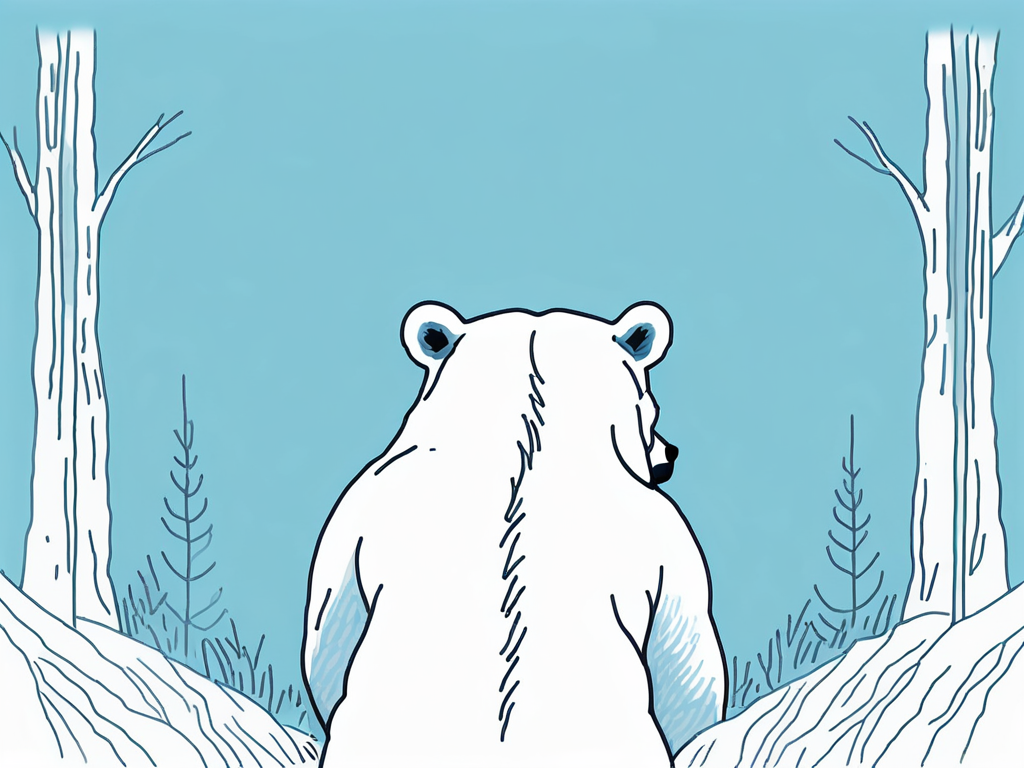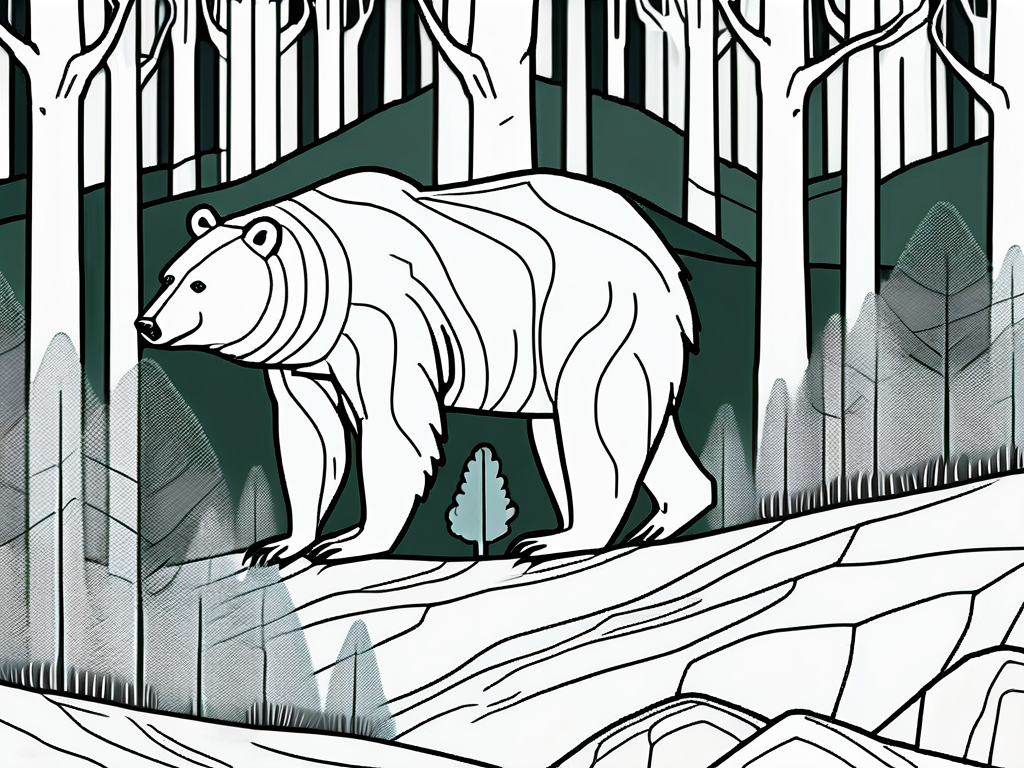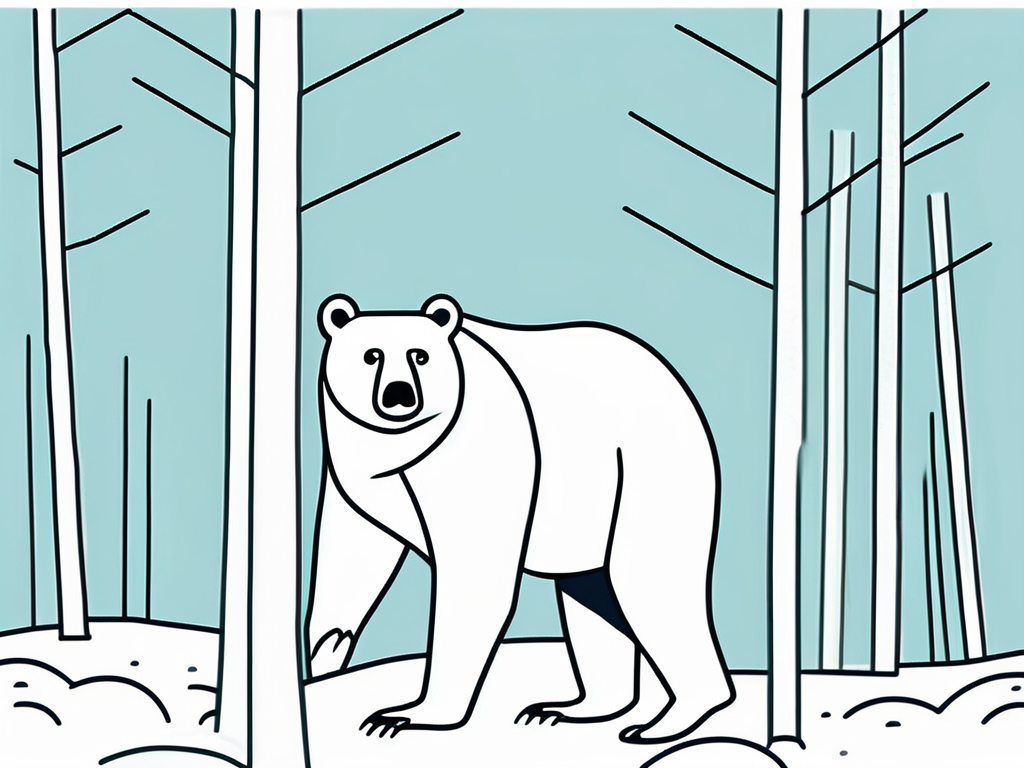Welcome to our comprehensive guide on everything you need to know about bear butts. Bears are fascinating creatures in their lives. In this article, we will explore the basics of bear butts, delve into their significance in nature and different cultures, and discuss efforts to protect bear habitats. So, let's dive in and unravel the mystery of bear butts together!
Understanding the Basics of Bear Butts
Anatomy of a Bear Butt
Before we delve into the peculiarities of bear butts, let's familiarize ourselves with their anatomy. A bear's posterior consists of powerful muscles, fat deposits, and a remarkable covering of fur. These robust muscles allow bears to run, climb, and swim with agility, while the thick layer of fat helps insulate them in colder climates.

Furthermore, the fur on their behinds is not just for aesthetics; it serves as a protective shield against the elements and potential injuries. Bears have truly remarkable derrières!
When it comes to the muscles in a bear's butt, they are not just for show. These muscles are essential for a bear's survival in the wild. The gluteal muscles, particularly the gluteus maximus, play a crucial role in the bear's ability to sprint after prey or climb trees to escape danger. The strength and power of these muscles are a testament to the bear's remarkable physical capabilities.
Why Bear Butts are Unique
Bear butts are captivatingly unique for several reasons. While humans have differentiating features like fingerprints, bears have distinct patterns of fur on their posteriors. This helps researchers identify individuals and study their behavior and movement patterns.
Similarly, just like each person has a unique personality, bears also have individual "butt-itudes." Their behaviors, habits, and even territorial markings can be determined by the distinct characteristics of their derrières. It's like their own personal calling card!
Another fascinating aspect of bear butts is their role in communication within the bear community. Bears use their behinds not just for sitting and running but also for sending signals to other bears. Scent glands located near the anus release pheromones that convey information about the bear's identity, reproductive status, and even emotional state. This unique form of communication adds another layer of complexity to the already intriguing world of bear butts.
Common Misconceptions About Bear Butts
Debunking Bear Butt Myths
There are many misconceptions surrounding bear butts, which we're here to debunk. One common myth is that bear behinds are only used for sitting. While bears do use their posteriors as cushions when they take a load off, there's so much more to their butts than just sitting!
Bears also rely on their derrières for balance and agility. Their robust muscles and fat deposits help them maintain stability while climbing trees or scaling rocky terrain. So, next time you see a bear in action, admire the versatility of its posterior!
Another fascinating aspect of bear butts is their role in communication. Bears use their behinds to leave scent markings on trees and rocks, signaling their presence to other bears in the area. These scent markings help establish territories and communicate reproductive status, making bear butts essential for social interactions within the bear community.
Facts vs Fiction: Bear Butts
Let's separate fact from fiction when it comes to bear butts. Contrary to popular belief, bear behinds are not solely for aesthetic purposes. While their furry posteriors might be adorable, their primary function is practical – to help them thrive in their natural habitats.
So, the next time you encounter a bear and find yourself mesmerized by its derrière, remember that nature has equipped them with these features for a purpose beyond just being cute!
It's also worth noting that the size and shape of a bear's butt can vary depending on the species and individual. For example, polar bears have wider and more padded behinds to help them navigate icy terrain, while black bears have sleeker posteriors suited for climbing trees with agility. These adaptations showcase the incredible diversity and specialization of bear butts in different environments.
The Role of Bear Butts in Nature
Bear Butts and Hibernation
When it comes to hibernation, bears' behinds play a crucial role. During winter, when food is scarce and temperatures drop, bears rely on their fat reserves to sustain them. Their well-padded posteriors contribute to storing the necessary energy for their long slumber.

So, if you ever come across a bear in hibernation, remember that its plump behind is the result of careful preparation for surviving the cold months!
Additionally, the insulation provided by a bear's ample backside is not just about energy storage. The thick layer of fat beneath the bear's skin also helps to protect vital organs and maintain body temperature during the harsh winter months. This biological adaptation ensures that bears can conserve energy and survive in their dormant state until the arrival of spring.
Bear Butts and Communication
Believe it or not, bear butts also play a part in communication. Bears have specialized scent glands located near their derrières that they use for marking their territory. These scent markings act as a form of communication with other bears, signaling boundaries and leaving a fragrant message behind.
So, the next time you come across a bear's territorial marking, you'll understand that their derrière played a vital role in establishing and maintaining their communication network!
In addition to territorial communication, the scent glands near a bear's behind also play a role in social interactions within bear communities. By leaving distinct scents in their feces or on trees, bears can convey information about their age, reproductive status, and even emotional state to other bears in the area. This olfactory messaging system helps to maintain social hierarchies and facilitate cooperation among bears in the wild.
Frequently Asked Questions About Bear Butts
Why are Bear Butts so Big?
One question that often arises is why bear butts are so big. The answer lies in their evolutionary adaptation. Bears need a sufficient fat reserve to survive periods of scarce food, therefore requiring a larger behind to store that extra energy.

So, next time you encounter a bear with an ample posterior, appreciate its evolutionary advantage in a challenging environment!
Furthermore, the size of a bear's butt can also play a role in communication within the species. In some bear species, a larger behind can indicate dominance or reproductive fitness, influencing social interactions and mate selection.
Do All Bears Have the Same Kind of Butt?
No two bear butts are exactly alike! Just like humans have unique physical characteristics, bears also possess distinct derrière patterns. These patterns can vary in color, shape, and fur density, making each bear's behind a remarkable testament to its individuality.
So, if you happen to spot different bear behinds, take a moment to acknowledge the beauty of nature's diversity!
Moreover, the unique markings and features on a bear's behind can serve as a form of camouflage in their natural habitats. The specific coloration and patterns on their buttocks can help them blend into their surroundings, providing a crucial advantage when hunting or avoiding predators.
The Significance of Bear Butts in Different Cultures
Bear Butts in Folklore and Mythology
Bear butts hold cultural significance in various folklores and mythologies around the world. In some traditions, bear behinds symbolize strength, resilience, and protection. These attributes are often associated with the bear's robust posterior and its ability to navigate challenging terrains.
So, next time you come across bear references in ancient tales or symbols, remember that their behinds carry profound meanings!
Furthermore, in Native American folklore, the bear's rear end is often seen as a symbol of grounding and connection to the earth. The bear's strong hindquarters are believed to represent stability and the ability to stand firm in the face of adversity, reflecting the bear's role as a protector and provider in many indigenous cultures.
Modern Cultural References to Bear Butts
Bear butts have made their way into modern culture as well. From humorous cartoons and merchandise to playful references in popular media, their adorable derrières have captured our imaginations.
So, the next time you come across a bear with its posterior in the spotlight, take a moment to appreciate the whimsical joy they bring to our lives!
In contemporary art and design, bear butts are sometimes used as a symbol of lightheartedness and playfulness. Artists and creators incorporate bear behinds in their work to evoke a sense of humor and childlike wonder, adding a touch of whimsy to everyday objects and visuals.
Protecting Bear Habitats for Healthy Bear Butts
The Impact of Climate Change on Bear Butts
Climate change poses a significant threat to bear habitats and consequently impacts their posteriors. With rising temperatures and changing landscapes, bears face challenges in finding suitable food sources and maintaining their fat reserves for hibernation.
As climate change continues to alter ecosystems, bears are forced to adapt their foraging behaviors and migration patterns, putting additional stress on their butts. The loss of traditional food sources due to shifting climates can lead to malnutrition among bear populations, affecting the health and plumpness of their derrières.
It's essential for us to recognize the role we play in mitigating climate change and preserving these magnificent creatures' habitats and, by extension, their precious derrières.
Conservation Efforts for Bear Habitats
Thankfully, numerous conservation organizations are working diligently to protect bear habitats and ensure the well-being of these charismatic animals. Through initiatives such as habitat preservation, public education, and sustainable policies, they are making a positive impact on the future of bear butts.
Moreover, these conservation efforts not only benefit bears but also contribute to the overall health of ecosystems. By safeguarding bear habitats, we are promoting biodiversity and preserving essential wildlife corridors that support a variety of species beyond just bear butts.
By supporting these efforts, we can contribute to the conservation of bear habitats and help secure a bright future for their remarkable posteriors.
And there you have it! We hope this guide has enlightened you about the intriguing world of bear butts. From their unique anatomy and misconceptions to their role in nature and cultural significance, bear derrières are truly captivating. Let's continue to appreciate and protect these incredible creatures and their extraordinary posteriors!
Bring the Wild into Your Kitchen!
As you've learned about the fascinating world of bear butts, why not bring a touch of wildlife fun into your baking? BakeMeMate invites you to explore our whimsical collection of cookie cutters, including the beloved Bear Butt Cookie Cutters. Perfect for all occasions, these cutters are sure to spark joy and laughter in your kitchen. If you're feeling creative, we'd love to help you design the perfect custom cookie cutter. Quality and customer satisfaction are our top priorities, so visit us now and add some cheeky charm to your cookie creations!

